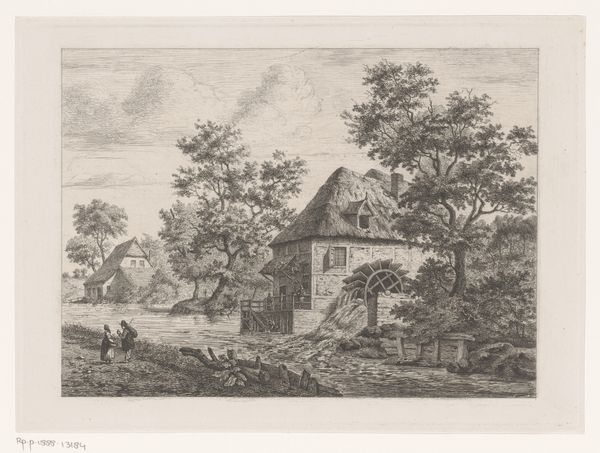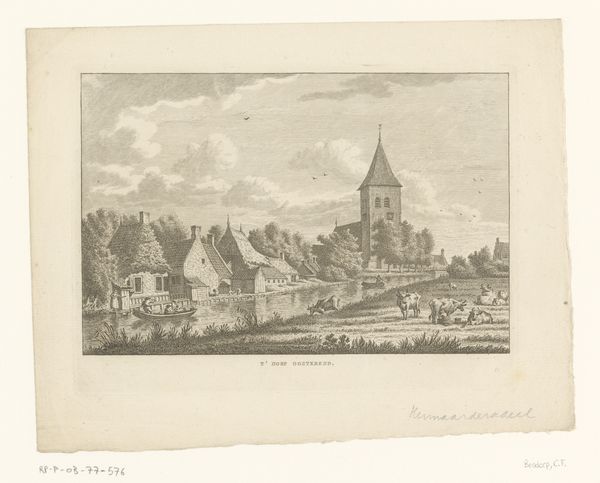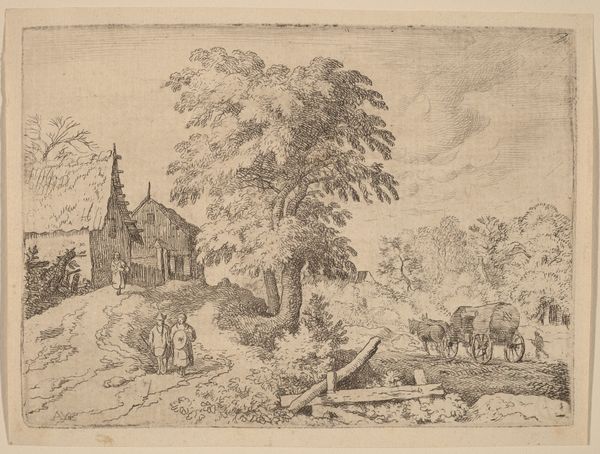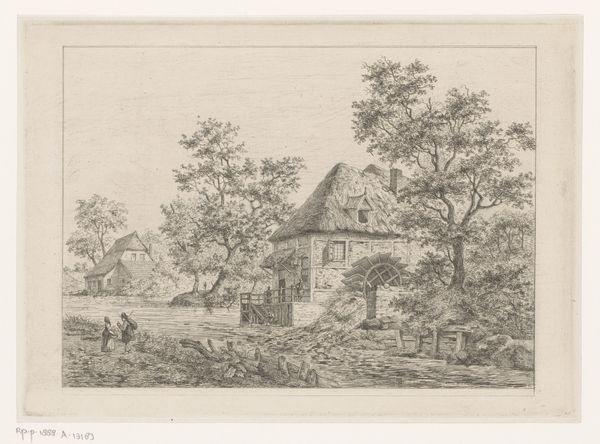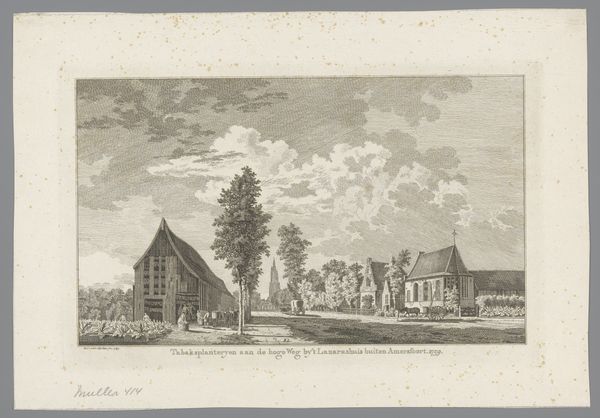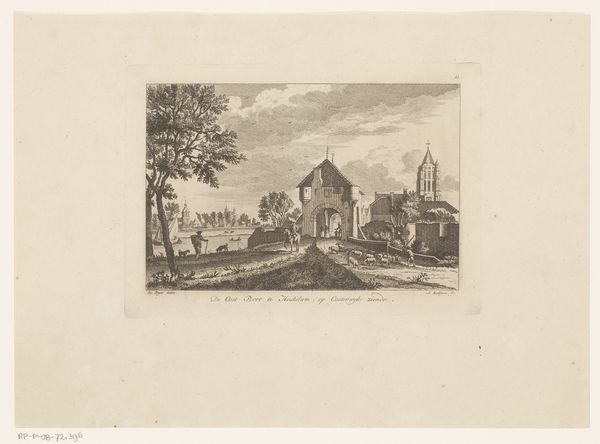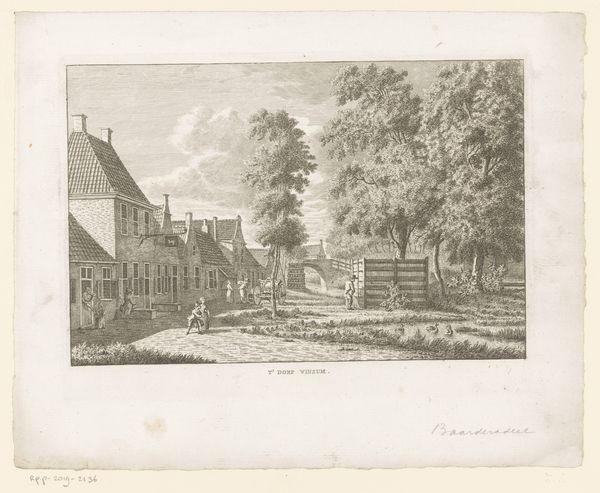
print, etching
#
medieval
# print
#
etching
#
landscape
#
realism
Dimensions: height 208 mm, width 276 mm
Copyright: Rijks Museum: Open Domain
Auguste Numans created this landscape with houses and a castle using etching. The image presents a romanticized view of the Dutch countryside, likely during the 19th century. We can observe the imposing castle or church as a central element, symbolizing established power structures, be that religious or feudal. The surrounding rural setting, with modest houses and a lone figure, hints at the social hierarchy of the time. During the 19th century, the Netherlands underwent significant social and economic changes. Etchings like this played a role in shaping national identity by romanticizing the past. The very act of depicting this imagery reflects the cultural values and artistic conventions of its time. To fully understand this artwork, we can delve deeper into Dutch social history through archives, period literature, and institutional records. By contextualizing it, we can better understand how art engages with the social conditions of its time, whether to reinforce or challenge them.
Comments
No comments
Be the first to comment and join the conversation on the ultimate creative platform.
